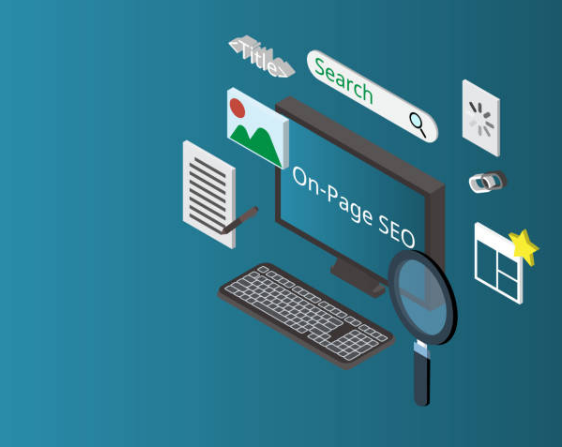Introduction to On-Page SEO
On-page SEO is a fundamental aspect of digital marketing that involves optimizing individual web pages to improve their visibility and ranking on search engines. Unlike off-page SEO, which focuses on external factors such as backlinks, on-page SEO is concerned with the elements within your website. This guide will explore the key components of on-page SEO and offer practical tips to enhance your site’s performance.
The Importance of On-Page SEO
On-page SEO is crucial for several reasons. It helps search engines understand your website’s content and structure, improving your chances of ranking higher for relevant keywords. Moreover, well-executed on-page SEO enhances the user experience by providing clear, relevant, and high-quality content. This can lead to increased engagement, reduced bounce rates, and higher conversion rates.
Key Elements of On-Page SEO
1. Title Tags
Title tags are essential for SEO, appearing as clickable headlines in search results. They should be concise, include your primary keyword, and accurately describe the page’s content.
2. Meta Descriptions
Meta descriptions provide a brief summary of your page’s content and appear beneath the title tag in search results. While they don’t directly affect rankings, well-written meta descriptions can increase click-through rates by enticing users to visit your site.
3. Headers (H1, H2, H3, etc.)
Headers help organize your content, making it easier for both users and search engines to understand. The H1 tag should include your main keyword and clearly indicate the page’s main topic, while subheadings (H2, H3, etc.) break down the content into manageable sections.
4. URL Structure
A well-structured URL is crucial for SEO. It should be clean, descriptive, and include relevant keywords. Avoid using special characters or numbers that don’t provide context.
5. Image Optimization
Optimizing images involves using descriptive file names, adding alt text, and compressing images to improve load times. These practices help search engines understand the content of your images and can drive traffic from image search.
6. Content Quality and Relevance
High-quality content is at the heart of on-page SEO. Your content should be informative, engaging, and relevant to your audience. Use target keywords naturally and focus on answering the user’s search intent.
7. Internal Linking
Internal links connect your site’s pages, helping distribute page authority and improve navigation. They also assist search engines in crawling your site more efficiently.
8. Mobile-Friendliness
With mobile devices accounting for a significant portion of web traffic, having a mobile-friendly site is vital. Ensure your site is responsive and offers a seamless experience across all devices.
9. Page Speed
Page speed affects both user experience and SEO. Slow-loading pages can lead to higher bounce rates and lower rankings. Optimize your site’s speed by compressing images, using a content delivery network (CDN), and minimizing JavaScript and CSS.
10. User Experience (UX)
A positive user experience includes easy navigation, fast load times, high-quality content, and an attractive design. Good UX can lead to higher engagement and better SEO performance.
Best Practices for On-Page SEO
To maximize the effectiveness of your on-page SEO, consider these best practices:
- Conduct Keyword Research:
Keyword research is the foundation of SEO. It involves identifying the search terms your target audience uses when looking for information related to your content. Choose keywords that have a good balance of search volume (how often the term is searched) and competition (how many other sites are targeting the same keyword). Tools like Google Keyword Planner, Ahrefs, and SEMrush can help you find relevant keywords. Prioritize long-tail keywords—more specific phrases that are less competitive but highly relevant to your niche.
- Optimize Content for User Intent:
User intent, or search intent, refers to the reason behind a user’s search query. Your content should not only include relevant keywords but also address the specific needs or questions that users have. There are four main types of user intent: informational (seeking information), navigational (looking for a specific website), transactional (aiming to make a purchase), and commercial investigation (researching before a purchase). By understanding and addressing the intent behind the keywords, you can create content that satisfies your audience and improves your rankings.
- Use Schema Markup:
Schema markup is a form of microdata that helps search engines understand the context of your content. By adding schema to your HTML, you can enhance your site’s visibility with rich snippets—extra information displayed in search results, such as star ratings, prices, or author details. This not only makes your listings more appealing but can also improve click-through rates. Schema can be used for various types of content, including articles, events, products, and more.
- Keep Content Up-to-Date:
Regularly updating your content is crucial for maintaining its relevance and accuracy. Outdated information can lead to a poor user experience and harm your credibility. Additionally, search engines favor fresh content, which can help improve your rankings. Update your content with new statistics, trends, or additional insights, and review your SEO strategy periodically to incorporate new keywords and best practices.
- Monitor Performance:
Tracking the performance of your on-page SEO efforts is essential for understanding what works and where improvements are needed. Tools like Google Analytics and Google Search Console provide valuable insights into metrics such as organic traffic, bounce rates, and average time on page. These tools can also alert you to any issues, such as crawl errors or mobile usability problems, allowing you to address them promptly.
Common On-Page SEO Mistakes to Avoid
Avoid these pitfalls to ensure your on-page SEO efforts are effective:
- Keyword Stuffing:
Keyword stuffing refers to the overuse of keywords in your content, which can harm readability and user experience. While it was once a common tactic, modern search engines prioritize content quality over keyword density. Overloading your content with keywords can lead to penalties and a drop in rankings. Instead, use keywords naturally and focus on delivering valuable information.
- Duplicate Content:
Duplicate content occurs when identical or very similar content appears on multiple pages of your site or across different sites. This can confuse search engines, making it difficult to determine which page should rank for specific queries. Duplicate content can dilute your page authority and lead to lower rankings. Use canonical tags to indicate the preferred version of a page, and create unique, original content.
- Ignoring Mobile Optimization:
With a significant portion of web traffic coming from mobile devices, having a mobile-friendly website is essential. Mobile optimization ensures that your site is easily accessible and navigable on smartphones and tablets. This includes using responsive design, optimizing images and other elements for faster load times, and ensuring buttons and links are easily clickable. Mobile optimization is a key factor in Google’s ranking algorithm, making it crucial for SEO. - Neglecting Internal Linking:
Internal linking involves linking to other pages within your website. It helps users navigate your site, establishes a hierarchy of information, and distributes page authority across your site. Internal links also help search engines crawl your site more effectively. Avoid linking excessively or using generic anchor text like “click here.” Instead, use descriptive anchor text that provides context about the linked page.
- Overlooking Meta Descriptions:
Meta descriptions are short snippets that summarize the content of a page. They appear below the title tag in search engine results. While meta descriptions don’t directly affect rankings, they play a crucial role in enticing users to click on your link. A well-crafted meta description should include relevant keywords, provide a clear summary of the page, and be compelling enough to encourage clicks. Avoid writing generic or overly long descriptions, as these may be truncated in search results.
How to Measure On-Page SEO Success
To evaluate the success of your on-page SEO efforts, track these key metrics:
- Organic Traffic:
Organic traffic refers to the number of visitors coming to your site from search engine results, excluding paid advertisements. An increase in organic traffic indicates that your SEO efforts are successfully driving more visitors to your site. Use tools like Google Analytics to monitor organic traffic trends over time and identify which pages are attracting the most visitors.
- Bounce Rate:
Bounce rate measures the percentage of visitors who leave your site after viewing only one page. A high bounce rate can indicate that users are not finding what they expected or that your content is not engaging enough. To reduce bounce rate, ensure your content is relevant, easy to read, and provides a clear call to action. Additionally, improve site navigation and load times to keep users engaged.
- Average Time on Page:
This metric indicates how long visitors stay on a particular page. A longer average time on page suggests that users find your content valuable and are engaging with it. To increase this metric, focus on creating in-depth, high-quality content that fully addresses user queries. Use multimedia elements like videos and infographics to enhance user experience and keep visitors on the page longer.
- Keyword Rankings:
Tracking your keyword rankings helps you understand how well your site is performing for specific search terms. Use tools like Google Search Console, Ahrefs, or SEMrush to monitor changes in your rankings over time. If your rankings improve, it’s a sign that your SEO efforts are working. If they decline, analyze your site to identify potential issues, such as keyword cannibalization or technical SEO problems.
- Conversion Rate:
Conversion rate measures the percentage of visitors who complete a desired action on your site, such as filling out a form, making a purchase, or subscribing to a newsletter. A higher conversion rate indicates that your site is effectively guiding users towards these actions. To improve conversion rates, optimize your landing pages, simplify the user journey, and ensure your calls to action are clear and compelling.
Conclusion
On-page SEO is a critical component of a successful digital marketing strategy. By optimizing your website’s content and structure, you can enhance your visibility, attract more organic traffic, and provide a better user experience. Follow the best practices outlined in this guide, avoid common mistakes, and continually monitor your site’s performance to achieve long-term success.
FAQs
What is on-page SEO?
On-page SEO involves optimizing various elements within a website, such as content, title tags, and meta descriptions, to improve its visibility on search engines.
How does on-page SEO differ from off-page SEO?
On-page SEO focuses on optimizing elements within your website, while off-page SEO involves external factors like backlinks and social signals.
Why is keyword research important for on-page SEO?
Keyword research helps identify relevant search terms used by your target audience, allowing you to optimize your content to meet their needs and improve search rankings.
How often should I update my website’s content for SEO?
Regularly updating your content ensures it remains relevant and accurate. Aim to review and update your content at least once a year or as needed.
How can Heyday Marketing help with on-page SEO?
Heyday Marketing offers comprehensive SEO services, including on-page optimization, to help businesses improve their online presence and achieve higher search engine rankings.
By following these tips and strategies, you can effectively optimize your website for on-page SEO, leading to improved search engine rankings, increased organic traffic, and a better overall user experience.




